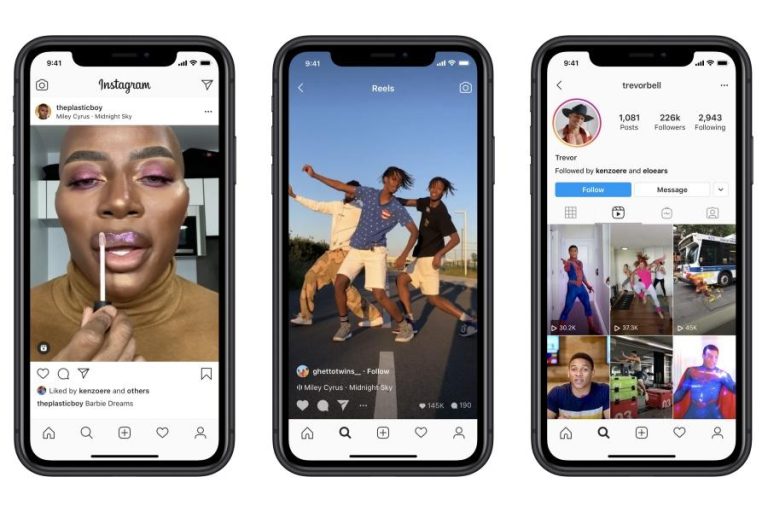Short-form video has become a primary gateway to the news, and Instagram’s Reels is rapidly challenging TikTok’s grip on that space. As publishers, creators, and citizen journalists chase real-time visibility, audiences are turning to Reels for breaking updates, explainers, and on-the-ground footage that once spread first on TikTok.
The rivalry is about more than reach. It hinges on algorithms, moderation rules, and monetization, with Meta amplifying Reels across Instagram and Facebook while TikTok faces mounting political scrutiny in key markets. Newsrooms are recalibrating strategies accordingly, testing formats and workflows that travel across platforms without sacrificing credibility.
This article examines how Reels is competing for news discovery, what’s changing in audience behavior, and the implications for publishers, creators, and the wider information ecosystem.
Table of Contents
- Reels rivals TikTok in news discovery as Instagram’s recommendation engine boosts publisher reach
- Building trust on Reels with verification workflows transparent sourcing captions and on screen context
- A newsroom playbook for Reels scheduling editing hooks subtitles and the metrics that matter
- Wrapping Up
Reels rivals TikTok in news discovery as Instagram’s recommendation engine boosts publisher reach
Instagram’s short‑form video format is fast becoming a frontline venue for current‑events updates, with Meta’s recommendation engine propelling clips from established outlets and upstart news creators beyond their follower bases; publishers report higher non‑follower impressions, deeper watch time, and more saves/shares on briefs that package headlines, captions, and on‑screen context, while the platform’s cross‑surface distribution (Feed, Explore, and Reels tab) helps timely posts reach younger audiences at speed-benefits tempered by ongoing scrutiny over misinformation, transparency, and political‑content policies during high‑stakes news cycles.
- What’s driving reach: Interest‑based ranking emphasizes completion rates, replays, and shares; fresh reporting and clear context keep clips circulating beyond followers.
- Publisher playbook: Vertical‑first edits, accurate subtitles, on‑screen source credits, and link stickers that funnel viewers to full articles and live blogs.
- Risk factors: Rapid virality raises verification demands; fact‑checking labels and clearer provenance signals are critical for credibility.
- What to watch: Policy tweaks around political content, evolving creator‑publisher collaborations, and expanding ad/revenue‑share formats tied to short‑form inventory.
Building trust on Reels with verification workflows transparent sourcing captions and on screen context
As short-form video becomes a primary conduit for breaking updates, Instagram is leaning on credibility signals to narrow TikTok’s lead in news discovery, weaving verification checks into creation and distribution, surfacing source-forward captions, and adding on-screen explainers that clarify what viewers are seeing; the result is a feed where provenance, accountability, and corrections are not buried in comments but presented at the moment of consumption.
- Verification in the workflow: visible badges, tap-to-view account history, and collaboration tags that distinguish reporters, outlets, and eyewitnesses from impostors.
- Source transparency in captions: structured fields for links, documents, and publication timestamps, plus automatic labels for reposts and AI-generated media.
- Context on screen: lower-thirds displaying location, time, and event status; timeline cards for evolving stories; and real-time correction overlays when facts are updated.
- Integrity friction: prompts before resharing unverified clips, rate limits for virality spikes tied to disputed claims, and prominent fact-check banners with appeal paths.
- Attribution by design: watermarking for original footage, credit lines for collaborators, and alt text that carries source and caption data for accessibility.
A newsroom playbook for Reels scheduling editing hooks subtitles and the metrics that matter
Newsrooms treating Reels as a distribution desk are winning by systematizing when to publish, how to cut, and what to watch. Build a clock and a checklist that travel from assignment to analytics and back into the pitch meeting.
- Scheduling: Publish within 15-45 minutes of a development; favor local peaks (7-9 a.m., noon, 6-9 p.m.). Maintain a 3-5 Reels/day cadence with pre-approved templates for breaking, explainer, and recap. Use Collaborator tags for reporters, geotags for local relevance, and hold embargos with scheduled drafts.
- Editing: 9:16 at 1080×1920, 30 fps; target 35-55 seconds. Cut on verbs every 0.8-1.5 seconds; open with motion or a graphic stinger. Keep lower-third safe areas (≥90 px sides; ≥300 px bottom). Prioritize nat sound; duck music −12 dB under voice. Add a 4-6 word grid cover; A/B test covers for 30 minutes and swap if scroll-stopping rate lags.
- Hooks: Land the “why it matters” in the first 0.8 seconds. Use verification cues on frame one (logo bug + timestamp + source line). Lead with a consequence, a question (“Here’s what we know at 9 a.m.”), a map/number, or a human face with authority (reporter stand-up, eyewitness).
- Subtitles: Burn-in sentence‑case captions with 95%+ accuracy; keep auto-captions on for accessibility. High-contrast background, 48-64 px mobile legibility, color-code speakers, and avoid blocking Instagram’s native UI. Include names/roles on first mention; align to editorial style.
- The metrics that matter: Monitor 3‑second view rate (impressions→views), average watch time, 8‑second retention, and completion rate as quality signals; track shares and saves as relevance (aim share+save/like ratio ≥0.6). Watch follows-from-Reel, time‑to‑velocity (first 10/30 minutes), and replays. If average watch time <6s or early drop >60%, re‑cover, re‑caption, or re‑cut the open; if saves spike, expand into a carousel or live Q&A.
Wrapping Up
For now, the race is less about who invented the short video feed and more about who can make it reliable for civic information. Instagram’s reach and brand safety pitch appeal to publishers wary of volatility, while TikTok’s culture of native creators keeps it central to how many young people encounter the day’s headlines.
Analysts note that the outcome will hinge on policy choices as much as product tweaks: how aggressively each platform elevates authoritative sources, how they handle political content, and whether looming regulatory pressures reshape distribution. With another packed news cycle ahead, the test is whether Reels can convert entertainment-first design into durable news habits-or whether TikTok’s grassroots news ecosystem keeps its edge.
Either way, the balance of power in mobile news is shifting from links and text to vertical video. Newsrooms, advertisers, and audiences will be adjusting in real time.


